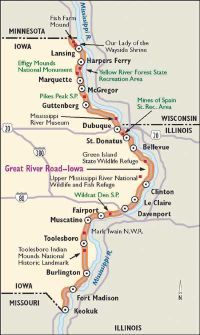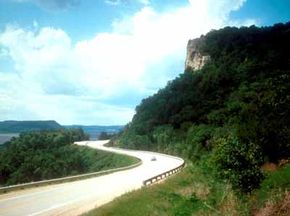Join travelers from around the world to discover dramatic vistas of Old Man River during all seasons. This scenic drive offers beautiful landscapes and views of soaring eagles and 100,000 migrating geese and ducks.
Experience Midwest hospitality on the main streets of river towns and cities, or visit sacred sites and landscape effigies of Native Americans. You can also experience the Mississippi River on steamboats, commercial barges, and recreational crafts.
Advertisement
The byway's story begins with the landscape: abrupt and dramatic limestone bluffs cut by glacial meltwater in the north contrast with broad sandy floodplains in the south. For thousands of years, Native Americans knew the importance of the continent's largest river.
Later, its meandering course marked the political boundaries of territories, towns, cities, states, and counties of the advancing society. Today, the Upper Mississippi River and the Great River Road are national repositories of geological wonders, unparalleled scenic beauty, wildlife, native vegetation, and the miracles of hydrology. The river and road are also milestones to the expansion and development of the United States and the Midwest.
The Great River Road stretches into Illinois, Wisconsin, and Minnesota. Keep reading to find out about the sights you'll see on the Iowa leg of this scenic byway.
Find out more useful information related to the Great River Road:
- Loess Hills Scenic Byway: On the western border of Iowa, the ecologically unqiue Loess Hills offer great scenery. Learn where to drive through it.
Advertisement


